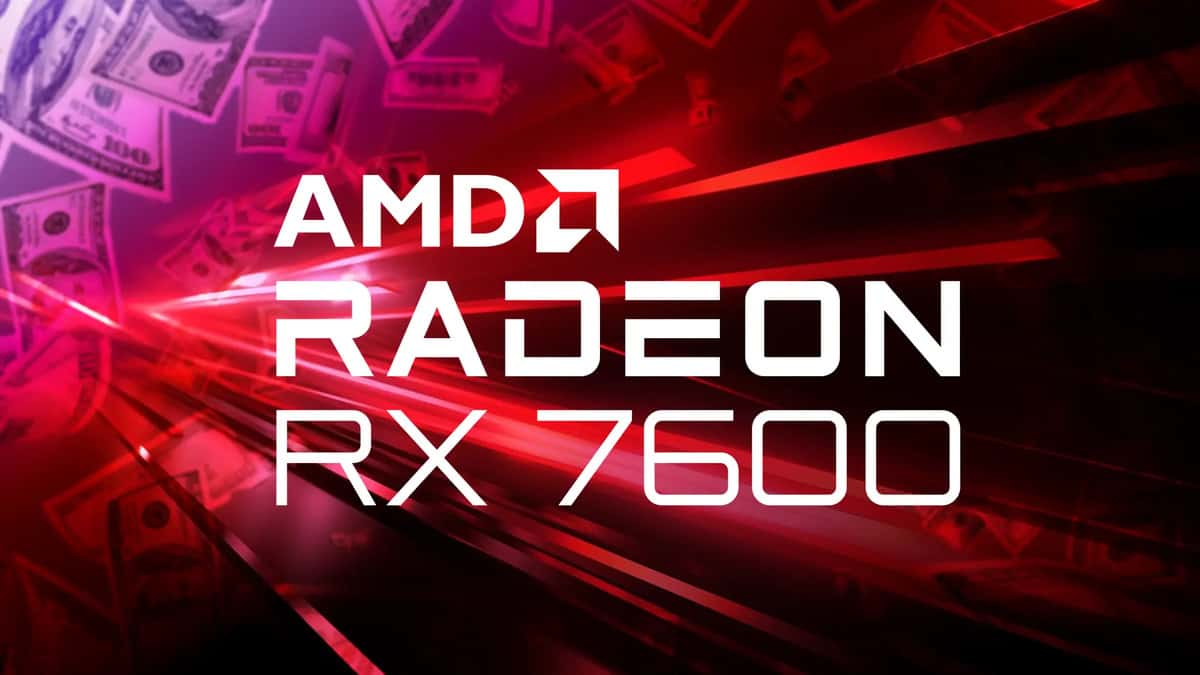RX 7600 vs RTX 4080 – where does AMD’s card rank?

Table of Contents
With the release of AMD’s new mid-range GPU, we will compare the RX 7600 vs RTX 4080. The technology market is no stranger to anticipation, and the pending release of the AMD Radeon RX 7600 is the latest instance of this anticipation. This AMD GPU, classified as mid-range, is particularly intriguing given the speculation surrounding its performance capabilities. A natural comparison can be made with the Nvidia RTX 4080, a well-regarded high-end offering from the 40 series GPUs, renowned for its top-tier performance and capabilities.
This article sets out to compare these two distinct GPUs, each targeting a different segment of the market. The RTX 4080, with its exceptional prowess, is targeted at users with demanding computational needs, while the RX 7600 is anticipated to appeal to gamers seeking strong performance and efficiency. This in-depth comparison seeks to highlight the unique characteristics and potential of each GPU, offering you a comprehensive understanding of their specifications.
RX 7600 Quick links
Amazon US
- RX 7600
- XFX Speedster QICK308 Radeon RX 7600 Black
- MSI Gaming Radeon RX 7600
- Gigabyte Windforce RX 7600
- Sapphire Pulse AMD Radeon RX 7600
Best Buy
Newegg
RX 7600 vs RTX 4080: Specs Comparison
First up, core counts. The RTX 4080 sits comfortably with its 9,728 CUDA cores, substantially more than the RX 7600’s 2,048 cores. This difference suggests a strong processing edge to the RTX 4080 for tasks that can leverage high parallel processing power, such as advanced rendering or AI computations.
However, clock speed comparison offers a little twist. The RTX 4080 presents a base frequency of 2205 MHz and a boost clock of 2505 MHz. In contrast, the RX 7600 is rumored to start at a base clock of 2250 MHz and ramp up to a surprisingly high 2655 MHz boost clock. This could potentially endow the RX 7600 with a nice performance uplift in scenarios where it can maintain those top speeds.
| Details | RX 7600 | RTX 4080 |
|---|---|---|
| Architecture | Navi 33 | AD103 |
| Cores | 2048 | 9728 |
| Texture Units | 128 | 304 |
| Raytracing Cores | 32 | 76 |
| Base Clock | 2250 MHz | 2205 MHz |
| Boost Clock | 2655 MHz | 2505 MHz |
| Memory | 8GB GDDR6 | 16 GB GDDR6X |
| Memory Interface | 128-bit | 256-bit |
| TDP | 165 W | 320W |
| Price | $269 | $1,199 |
Looking at the memory, the RTX 4080 boasts 16GB of swift GDDR6X memory, edging out the RX 7600’s 8GB of GDDR6. Additionally, the RX 7600 has a 128-bit memory bus compared to the RTX 4080’s 256- bits. This will allow greater data transfer per memory cycle. For tasks or games with heavy VRAM requirements, the RTX 4080’s greater memory bandwidth could be a boon.
When considering a power draw, the RTX 4080 pulls up to 320W, notably more than the RX 7600’s projected 165W TDP. This might position the RX 7600 as a desirable candidate for users mindful of their system’s power consumption and thermal footprint.
RX 7600 vs RTX 4080: Price
The RTX 4080, offering impressive performance figures, comes with a premium price tag of $1,199. In contrast, the RX 7600 is set to launch at an MSRP of $269. This substantial price difference could make the RX 7600 a fan favorite among gamers looking for a capable budget GPU that doesn’t require a small fortune.
RX 7600 vs RTX 4080: Performance
The RTX 4080, sitting near the top of Nvidia’s range, offers excellent performance figures. Its high number of cores and 16GB of fast GDDR6X memory make it a robust choice for demanding tasks that require a lot of processing power and memory capacity.
Meanwhile, the RX 7600, a mid-range contender, isn’t designed to rival the raw performance of the RTX 4080. However, its higher boost clock speeds suggest it could hold its own in gaming scenarios, particularly if it can sustain these high frequencies. Furthermore, its predicted lower power draw might make it a compelling choice for those focusing on energy efficiency.
Both graphics cards have upscaling technologies that allow them to pack a punch above their weights. AMD’s card comes with FidelityFX Super Resolutions (FSR) and the RTX 4080 has DLSS. They are great tools that both use AI to create new frames without increased power draw.
When comparing the RX 7600 to the RTX 4080, the key is understanding the potential strengths of AMD’s offering: clock speed management, power efficiency, and the balance of price and performance.
RX 7600 vs RTX 4080: Final thoughts
The RTX 4080, has higher benchmarks and provides outstanding performance for demanding tasks. The RX 7600, meanwhile, targets the mid-range market, with an aim to deliver respectable performance at an excellent price point. Its potential in gaming performance, efficiency, and price-to-performance could make it a solid choice for PC gamers not willing to shell out a premium for high-end GPUs.
If you are looking to dive into 4K gaming then the RTX 4080 is one of the best graphics cards for 4K gaming on the market today. On the other hand, if money is a concern then the RX 7600 is a great budget GPU that packs a significant punch.
